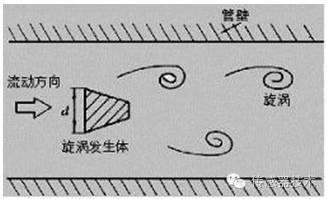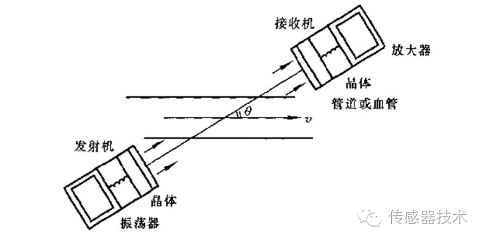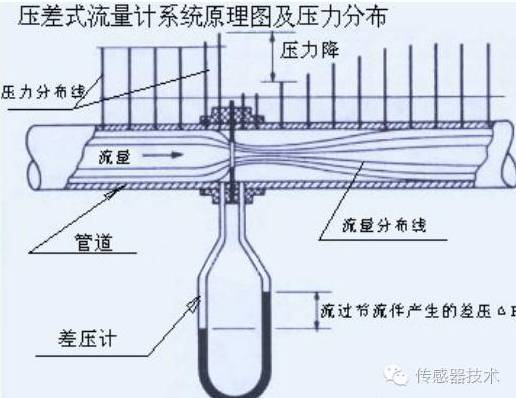Accurate measurement of flow is very important, using flow sensors to monitor the flow of liquid or gas in the metered pipeline, and is widely used in industrial control and civil facilities.
Flow Sensors
Flow is an important parameter in industrial production. In the industrial production process, many raw materials, semi-finished products, and finished products appear in a fluid state. The flow of fluid is the key to determining the composition and quality of the product, and is also an important basis for production cost accounting and rational use of energy. In addition, in order to ensure the reliability of the manufacturing process and the reliability of the test results, many processes require the inflow and outflow of liquid or gaseous media to be consistent. In addition to pressure and temperature, the flow measurement is also very important in the automated production process. Therefore, the measurement and control of flow is an important part of the automation of the production process.
A flow sensor is a sensor that senses the flow of fluid and converts it into a usable output signal. The sensor is placed in the path of the fluid, and the change in flow is measured by the interaction of the fluid with the sensor and the sensor. According to the definition of flow, it is mainly used for the detection of gas and liquid flow.
Classification of flow sensors:
The flow sensor can be divided into the following types according to different detection methods, and the corresponding sensors perform work:
Electromagnetic detection method: electromagnetic flow sensor
Mechanical detection method:
Volume flow sensor
2. Vortex flow sensor
3. Turbine flow sensor
Acoustic detection method: super-wave wave flow sensor
Throttle detection method: differential pressure flow sensor
Let's talk about the differences between the above sensors:
I. Electromagnetic flow sensor: Definition: The electromagnetic flow sensor is composed of two parts: a sensor that directly contacts the pipe medium and a signal conversion at the upper end. It is based on Faraday's law of electromagnetic induction and is used to measure the flow of conductive liquid with a conductivity greater than 5 μs/cm. It is a meter for measuring the flow of conductive media. In addition to measuring the flow rate of general conductive liquids, it can also be used to measure strong corrosive liquids such as strong acids and alkalis, and liquids containing two liquid suspensions, such as mud, pulp, pulp, etc. Principle: The working principle of the electromagnetic flow sensor is based on Faraday's law of electromagnetic induction. In the electromagnetic flow sensor, the conductive medium in the measuring tube is equivalent to the conductive metal rod in the Faraday test, and the two electromagnetic coils at the upper and lower ends generate a constant electromagnetic field. When a conductive medium flows, an induced voltage is generated. The two electrodes inside the pipe measure the induced voltage generated. The measuring tube is electromagnetically isolated from the fluid and the measuring electrode by a non-conductive inner liner (rubber, Teflon, etc.).


When the conductive liquid moves in the magnetic field as the cutting magnetic field line, the induced potential is generated in the conductor. The induced potential E is: E=KBVD where: K---meter constant B---magnetic induction intensity V---measure the average in the cross section of the pipeline Flow rate D---Measure the inner diameter of the pipeline section. The magnitude of the induced potential is related to the magnetic induction, the diameter of the pipe, and the flow velocity. which is:

The relationship between the volume flow rate qv and the fluid flow rate v:

Available:

Second, the volumetric flow sensor definition: volumetric flow sensor, also known as fixed displacement flow sensor, referred to as PD flow sensor, the highest accuracy in the flow meter category. Its mechanical measuring element continuously divides the fluid into a single known volume portion, and measures the total volume of the fluid according to the number of times the measuring chamber repeatedly fills and discharges the volume of the fluid one by one. Principle: Volumetric flow measurement is the use of a fixed small volume to repeatedly meter the volume of fluid passing through the flow sensor. Therefore, there must be a space inside the volumetric flowmeter sensor that constitutes a standard volume, which is referred to as the "metering space" or "metering chamber" of the volumetric flow sensor. This space is formed by the inner wall of the instrument case and the flow sensor rotating parts. The volumetric flow sensor works on the principle that when the fluid passes through the flow sensor, a certain pressure difference is generated between the sensor inlet and outlet. The rotating part of the flow sensor ("rotor" for short) produces a rotation under this pressure differential and discharges the flow from the inlet to the outlet. In this process, the fluid fills the "metering space" of the flow sensor again and again and is then continuously sent to the outlet. The volume of the metering space is determined under given flow sensor conditions, and as long as the number of revolutions of the rotor is measured, the cumulative value of the fluid volume through the flow sensor can be obtained.
Third, vortex flow sensor definition: vortex flow sensor is based on the principle of Kamen vortex street. When a triangular column type vortex generator is provided in the fluid, regular vortices are alternately generated from both sides of the vortex generator, and this vortex is called a Karman vortex. Principle: A non-streamlined vortex generator is placed in the fluid, so that the fluid is alternately separated on both sides of the generator, releasing two strings of regularly staggered vortices, and within a certain range, the vortex separation frequency is proportional to the flow rate of the flow sensor . By measuring the frequency of the vortex, the flow rate of the fluid can be calculated according to the relevant formula.

Vortex flow sensors are mainly used for flow measurement of industrial pipe medium fluids, such as gas, liquid, steam and other media. It is characterized by small pressure loss, large measuring range and high precision. It is almost unaffected by parameters such as fluid density, pressure, temperature and viscosity when measuring the volume flow rate. No moving mechanical parts, so the reliability is high and the maintenance is small. Instrument parameters can be stable for a long time.
IV. Turbine Flow Sensor Definition: The turbine flow sensor is similar to an impeller type water meter and is a speed flow sensor. An energy conversion device is constructed by placing a component such as a turbine impeller, a propeller, and the like in a fluid, using a principle that the speed of the turbine is proportional to the rate of the average volume flow, and the speed of the propeller is proportional to the velocity of the fluid.

Principle: The turbine flow sensor is equipped with a freely rotatable impeller in the pipeline. The fluid flows through the impeller to rotate the impeller. The larger the flow rate, the higher the flow velocity, the higher the kinetic energy and the higher the impeller speed. By measuring the speed or frequency of the impeller, the flow and total amount of fluid flowing through the pipe can be determined. Features: Turbine flow sensor is a speed meter, which has the advantages of high precision, good repeatability, simple structure, less moving parts, high pressure resistance, wide measuring range, small volume, light weight, small pressure loss and convenient maintenance. Used to measure the volumetric flow and total volume of low viscosity gases in closed conduits. It has extensive use value in industries such as petroleum, chemical, metallurgy and urban natural gas pipeline networks.
V. Ultrasonic Flow Sensor Definition: Ultrasonic flow sensor is a component made of piezoelectric material, lead titanate crystal, which converts electrical energy into acoustic energy. It is a meter that measures the volume flow by detecting the effect of the fluid flow on the ultrasound beam (or ultrasound pulse). Principle: When the ultrasonic beam propagates in the fluid, the flow of the fluid will cause a slight change in the propagation time, and the change in the propagation time is proportional to the flow rate of the liquid, thereby measuring the flow velocity of the fluid, according to the diameter of the pipe. Can calculate the flow size.

Characteristics: The current industrial flow measurement generally has the problem of large diameter and large flow measurement difficulty. This is because the general flow sensor will bring difficulties in manufacturing and transportation with the increase of the measuring pipe diameter, and the cost will increase and the energy loss will increase. The disadvantages of large and inconvenient installation can be avoided. Because all kinds of ultrasonic flow sensors can be installed outside the pipe, non-contact flow measurement, the cost of the instrument is basically independent of the size of the pipe to be tested, while other types of flow sensors increase with the increase in caliber, so the diameter is larger. The flow sensor is superior to the function of other types of flow sensors of the same function. The accuracy of the flow measurement of the ultrasonic measuring instrument is almost independent of the temperature, pressure, viscosity, density and other parameters of the measured fluid, and can be made into non-contact and portable measuring instruments, so it can solve the strong corrosiveness that is difficult to measure by other types of instruments. Flow measurement problems for non-conductive, radioactive, and flammable and explosive media.

Sixth, differential pressure flow sensor definition:
The differential pressure flow sensor is a meter that calculates the flow rate based on the differential pressure generated by the flow detecting member installed in the pipe, the known fluid condition, and the geometric size of the pipe.
principle:
The fluid filled with the pipe, when it flows through the throttle in the pipe, the flow rate will form a local contraction at the throttle, so the flow rate increases, the static pressure decreases, and a pressure difference is generated before and after the throttle. The larger the flow rate, the larger the pressure difference, so that the flow rate can be measured according to the pressure difference.

With the continuous development of flow sensors, more and more types of flow sensors are gradually coming out. Each of them has its own advantages and has its own shortcomings. When selecting a flow sensor, users should select the appropriate sensor according to their own needs. .
Shenzhen Kaixuanye Technology Co., Ltd. , https://www.icoilne.com